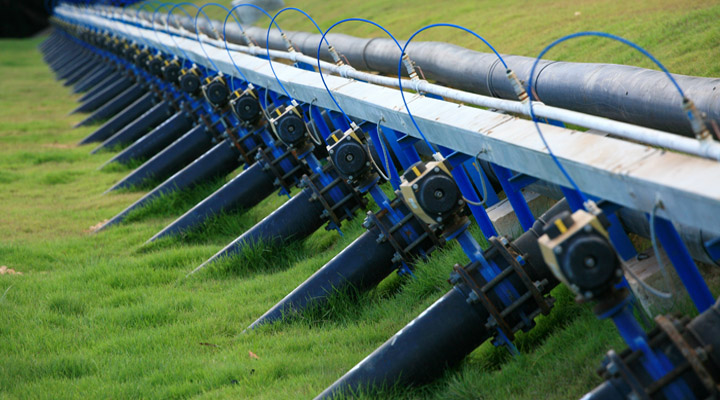ADI® CH4 Generating Reactor (CGR)
See All Anaerobic SystemsIn-ground, low-rate anaerobic digestion process used predominantly for bioenergy production.
- is the minimum order quantity for this product. Please check quantity and add to cart again.
- Save on sludge handling and disposal costs
- Consistent performance and enhanced process stability due to extended biomass contact and long hydraulic retention time
- Resilient against shock hydraulic and organic loadings
- Built-in recycling/wasting system
- Few equipment and moving parts results in low maintenance requirements
- ADI CGR brochure 436.9 KB
- All Documentation

In-ground, low-rate anaerobic digestion process used predominantly for bioenergy production.
- Save on sludge handling and disposal costs
- Consistent performance and enhanced process stability due to extended biomass contact and long hydraulic retention time
- Resilient against shock hydraulic and organic loadings
- Built-in recycling/wasting system
- Few equipment and moving parts results in low maintenance requirements
- ADI CGR brochure 436.9 KB
- All Documentation
Description
In-ground, low-rate anaerobic digestion process used predominantly for bioenergy production.
Biogas comprised primarily of methane, a reusable energy source, is generated as a by-product of the anaerobic digestion process. The ADI® CH4 Generating Reactor (CGR) system is ideal for applications such as organic food waste, waste streams high in starch, animal manure, and waste from palm oil mills, cassava plants, sugar refineries, and distilleries.
The reactor’s design facilitates efficient mixing between the anaerobic sludge and the feedstock and separates the hydraulic and solids residence times to enhance biogas production and solids breakdown. The large volume of the CGR system offers extended biomass contact and good process stability. The settlement zone is designed to collect sludge with a built-in recycling/wasting system that enables the sludge to be recycled to the distribution zone or wasted, when required.
- Consistent effluent quality
- Convert organic waste to recoverable green energy (heat and power)
- Waste sludge suitable for land application as liquid fertilizer due to high nutrient content
- Liquid effluent can be irrigated onto farm land as a nutrient supplement
Features
Costing Savings
- Save on sludge handling and disposal costs
- Save on energy costs
- Low energy consumption design
- Significantly less energy-intensive than aerobic systems
- Energy recovery from biogas can reduce use of fossil fuels
- Eliminate wastewater surcharges
- Reduce or eliminate chemical usage
Environmental Benefits
- Consistent effluent quality
- Convert organic waste to recoverable green energy (heat and power)
- Waste sludge suitable for land application as liquid fertilizer due to high nutrient content
- Liquid effluent can be irrigated onto farm land as a nutrient supplement
- Improve local and global water security
Process Advantages
- Consistent performance and enhanced process stability due to extended biomass contact and long hydraulic retention time
- Resilient against shock hydraulic and organic loadings
- Built-in recycling/wasting system
- Custom-designed cover: collects valuable biogas and provides insulation and odor control
Simplified Operation & Maintenance
- Few equipment and moving parts results in low maintenance requirements
- Minimal operator attention
- Flexible sludge wasting program
- Data trending for process control
- Cover provides easy access for sampling and maintenance
Specs
- Low Rate
Documentation
- ADI CGR brochure436.9 KB
- Anaerobic Digestion Solutions for Organic Wastewater537.1 KB
